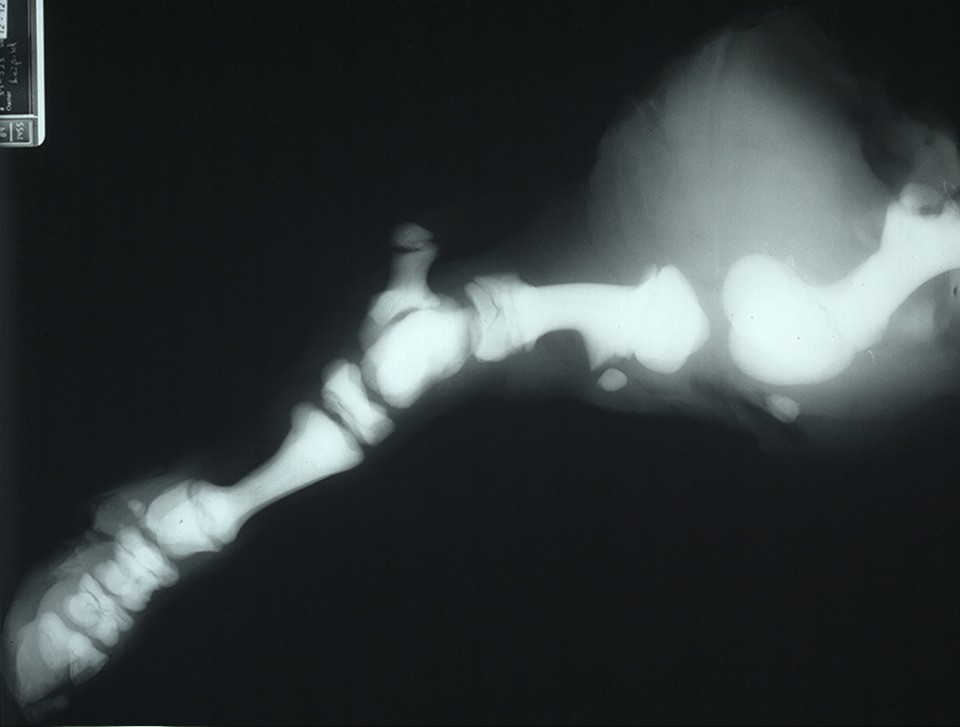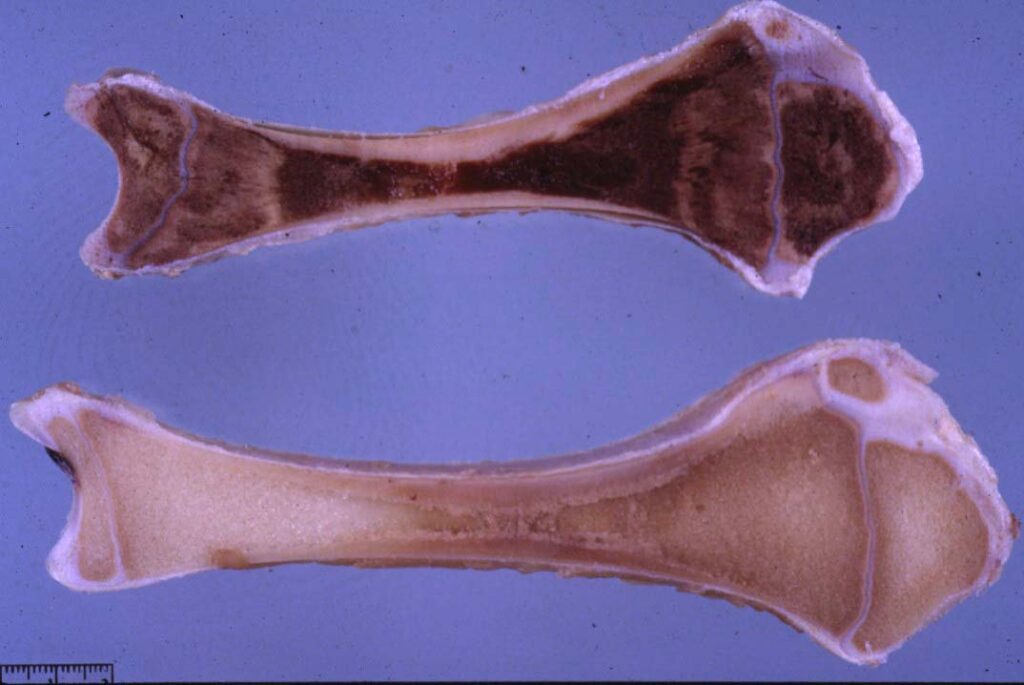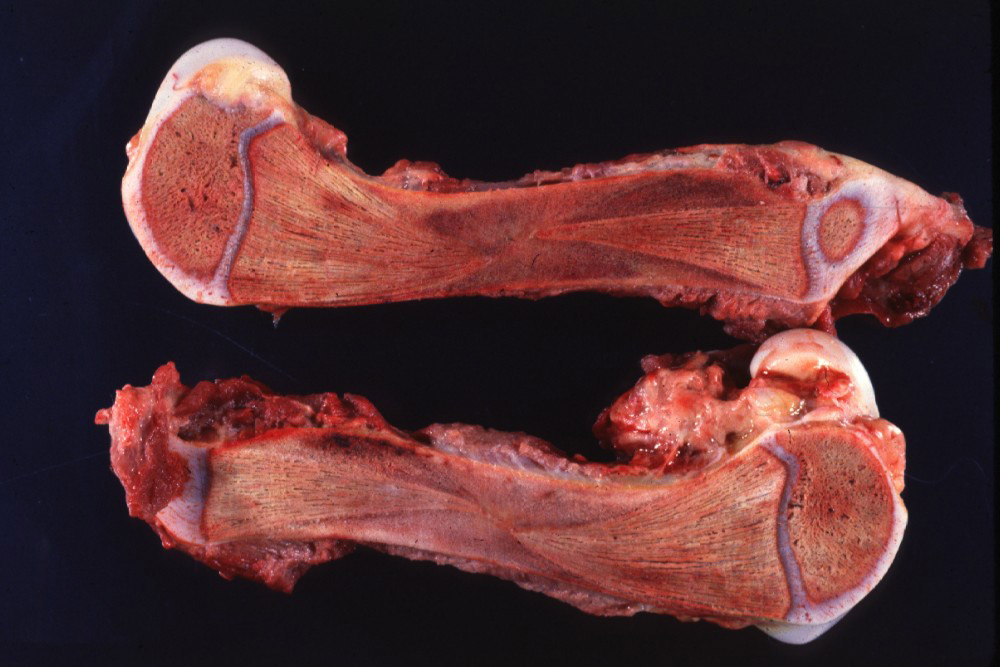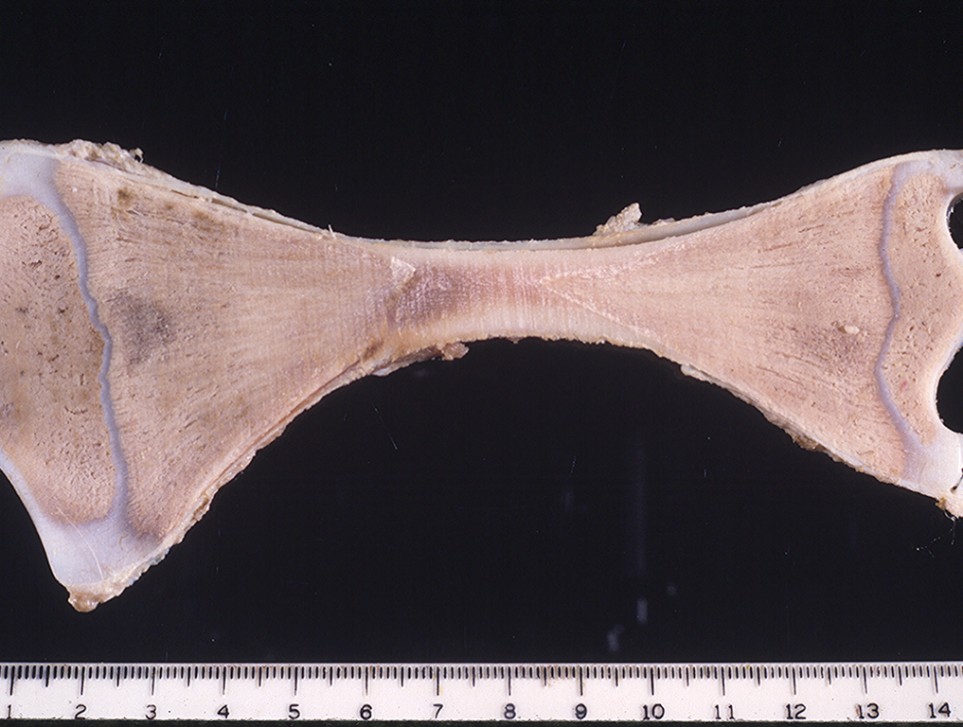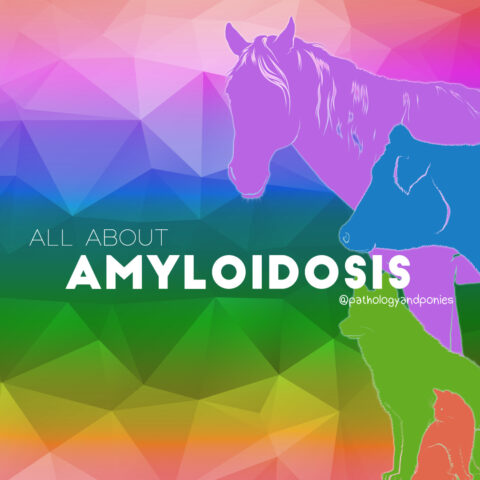Today’s path rounds are on 𝐦𝐚𝐫𝐛𝐥𝐞 𝐛𝐨𝐧𝐞 𝐝𝐢𝐬𝐞𝐚𝐬𝐞, also known as 𝐨𝐬𝐭𝐞𝐨𝐩𝐞𝐭𝐫𝐨𝐬𝐢𝐬!
𝐖𝐡𝐚𝐭 𝐢𝐬 𝐢𝐭?
𝐎𝐬𝐭𝐞𝐨𝐩𝐞𝐭𝐫𝐨𝐬𝐢𝐬 literally means “stone bone”, and is a condition where the 𝐨𝐬𝐭𝐞𝐨𝐜𝐥𝐚𝐬𝐭𝐬, cells that normally break down bone tissue, are defective. Because of this defect, boney tissue begins to take over the bone marrow cavity.
𝐖𝐡𝐨 𝐠𝐞𝐭𝐬 𝐢𝐭?
Any species can get this!
𝐖𝐡𝐚𝐭 𝐜𝐚𝐮𝐬𝐞𝐬 𝐢𝐭?
Most forms of osteopetrosis seen in our veterinary species are thought to be 𝐢𝐧𝐡𝐞𝐫𝐢𝐭𝐞𝐝, due to certain breeds being primarily affected. For example, in cattle, osteopetrosis is most commonly seen in Angus.
Ultimately, the genetic defect causing osteopetrosis most often affects the 𝐩𝐫𝐨𝐭𝐨𝐧 𝐩𝐮𝐦𝐩𝐬 or 𝐜𝐡𝐥𝐨𝐫𝐢𝐝𝐞 𝐜𝐡𝐚𝐧𝐧𝐞𝐥𝐬 of the osteoclasts, which are both needed to allow the osteoclast to produce acid. This acid is normally what is used to break down the mineral of the bone to allow the osteoclast to carry out its day-to-day function.
𝐖𝐡𝐲 𝐢𝐬 𝐭𝐡𝐢𝐬 𝐚 𝐩𝐫𝐨𝐛𝐥𝐞𝐦?
Typically osteopetrosis results in bones that are shorter than normal, and that are very fragile and prone to fracturing. In some cases, the bones may be so fragile that the animal is unable to stand without fracturing a limb. As you can imagine, this is not very conducive to a long and productive life, so these animals are often euthanized.
𝐇𝐨𝐰 𝐢𝐬 𝐢𝐭 𝐝𝐢𝐚𝐠𝐧𝐨𝐬𝐞𝐝?
The veterinarian can best diagnose this disease by taking an X-ray, which will show replacement of the normal bone marrow cavity with dense boney tissue.
𝐇𝐨𝐰 𝐢𝐬 𝐢𝐭 𝐭𝐫𝐞𝐚𝐭𝐞𝐝?
As mentioned, this disease has a very poor prognosis, and unfortunately there is no treatment.
𝐏𝐡𝐨𝐭𝐨𝐬
1) An X-ray of osteopetrosis. Normally you can see a 𝐫𝐚𝐝𝐢𝐨𝐥𝐮𝐜𝐞𝐧𝐭 (grey) area in the middle of each bone.
2) A comparison of a bone with osteopetrosis (bottom) to a normal bone.
3-6) More examples of bones with osteopetrosis!
𝐒𝐨𝐮𝐫𝐜𝐞𝐬
Maxie, G. Jubb, Kennedy and Palmer’s Pathology of Domestic Animals, Volume 1. Sixth Edition.
Photos 1-5 © Noah’s Arkive contributor Crowell, Nation, Leipold licensed under CC BY-SA 4.0.

